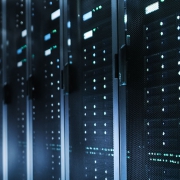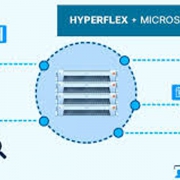Today, it’s all too easy to take our technological resources for granted. Instead of optimizing the systems we already have, we throw money at them when performance falls below standards. Running out of memory? Buy more. Latency? Increase bandwidth. Slow service? Get more server racks.
The computer that took man to the moon had exactly 72 kilobytes of memory. Fifty years later, the newest iPhone has almost 900 thousand times that storage capacity. NASA programmers had to make every bit count. They couldn’t afford to be wasteful: unfortunately, we can.
The DCOI Update
This June, the Office of Management and Budget (OMB) tackled the problem of wasteful spending with a new update to the Data Center Optimization Initiative (DCOI). According to the latest draft, government agencies will not be allowed to expand or invest in new data centers without express permission from the OMB.
Instead, the legislation directs government organizations to invest in Data Center Infrastructure Management (DCIM) tools to optimize power consumption, efficiency and energy utilization. If all goes as planned, agencies will improve their performance with minimal spending and no additional assets.
Businesses in the private sector could learn a thing or two from this initiative. But what is DCIM, and how will it help data centers to reduce unnecessary costs? In this article, we’ll answer both questions.
What is DCIM?
Servers and network infrastructure are resource intensive – power consumption alone can cost a medium sized data center millions of dollars per year. Armed with continuous monitoring and granular data, an organization can optimize power usage and workload to reduce these costs significantly.
The goal of DCIM is to give administrators better control over the low-level architecture supporting their business by providing a high-level overview of the relationship between IT and an organization’s facilities. Today, the role and capabilities of DCIM have expanded beyond cooling and power consumption with an emphasis on lifecycle asset management.
DCIM Capabilities
According to Gartner, the average DCIM tool on the market today can “monitor, measure, manage and/or control data center utilization and energy consumption of all IT-related equipment (such as servers, storage and network switches) and facility infrastructure components.”
Typical use cases include:
- Identify, monitor and locate all assets (new, decommissioned, in transit)
- Assess availability of racks and other equipment
- Generate comprehensive compliance reports
- Forecast capacity, load and energy consumption
- Analyze power usage for optimized performance
The information provided by DCIM tools provides a robust foundation for decisions at every level of a business, from preventive and responsive maintenance to business strategy and development. A good DCIM tool can also generate recommendations and diagnose problems, cutting down on the guesswork needed to improve performance.
Benefits of DCIM
As technology advances and network standards become more demanding, the capabilities required to build and maintain a viable data center increase every year. Higher costs for equipment and greater energy footprints have led to environmental legislation in many countries, and regulations like the DCOI.
In order to survive in the face of scrutiny and financial limitations, organizations must move from growth strategies centered on acquisition to lifecycle asset management, enabling them to extract maximum value from their existing architecture at minimum cost.
To that end, a DCIM tool helps in many ways:
- Identify cost savings – directly reduce the expense of running a data center by highlighting excessive energy consumption, opportunities to use fewer resources, redundant processes and unnecessary expenses. By consolidating all the assets at an organization’s disposal, it ensures that no resources are underutilized or overlooked.
- Improve asset lifespan – increase the longevity of assets in the data center by helping administrators to resolve problems quickly and avoid burnout through forecasting. Workloads can be optimally distributed to prevent overburdened assets, which also leads to improved performance.
- Determine impact – predict the impact of new or proposed decisions before they go into effect, including expansion, migration, retirement, upgrading, new acquisitions, onboarding clients, downsizing, strategy changes and much more.
- Business alignment – align IT architecture with business strategy and goals. Insights from continuous monitoring allow the resolution of conflicts between an organization’s mission, technology usage and facility design.
- Automate processes – automatically perform monitoring processes and workflows. With situational awareness, systems can be turned on or off when certain conditions are met, resources can be allocated or swapped, energy can be conserved, and services can be deployed.
Should you invest in DCIM?
Ultimately, the potential improvements from DCIM capabilities are obvious – not only can they raise an organization’s bottom line through improved spending and resource conservation, but they also increase customer satisfaction and stakeholder confidence.
Gartner recommends that any business with a medium-sized data center should invest in DCIM, and we agree: by putting strategy first and fully exploiting the value of its infrastructure, an organization will ensure that it makes the most of its assets through their entire lifecycle.
Professional TPM Provider for Northern Virginia
Located near the booming data center corridor in Loudoun County, VA, Digital Tech Inc provides rapid response maintenance services including EOSL extension, spare parts, short- and long-term maintenance agreements, migration assistance and depot repair options. Our skilled engineers offer multi-vendor support, covering IBM, HP, Dell EMC, Cisco, NetApp, and many more.
To learn more, contact us today.











